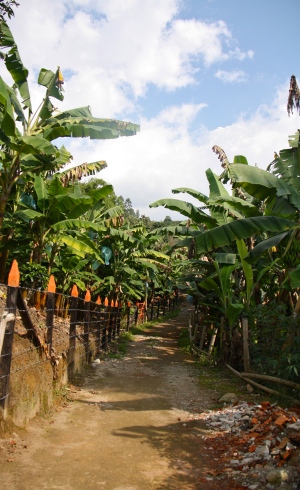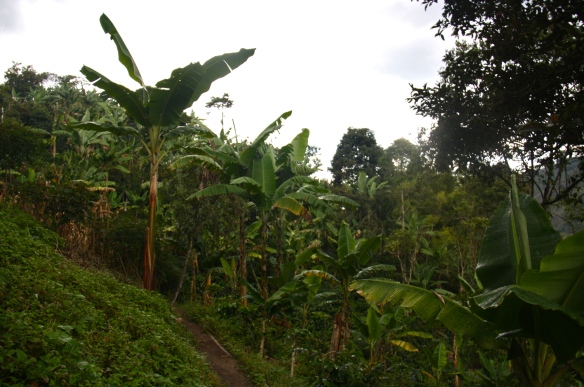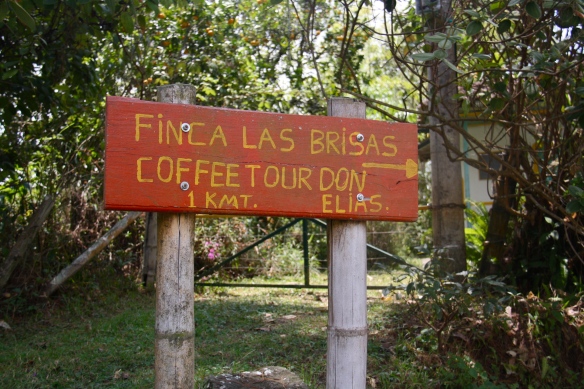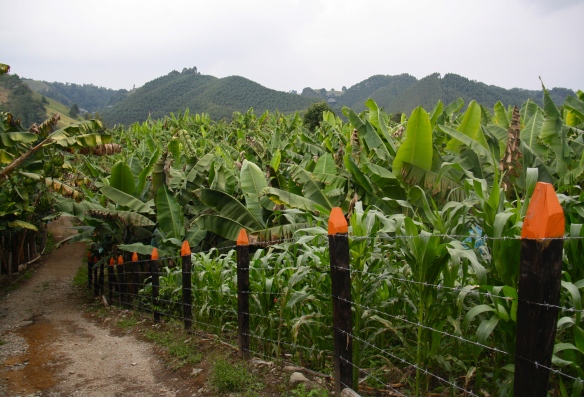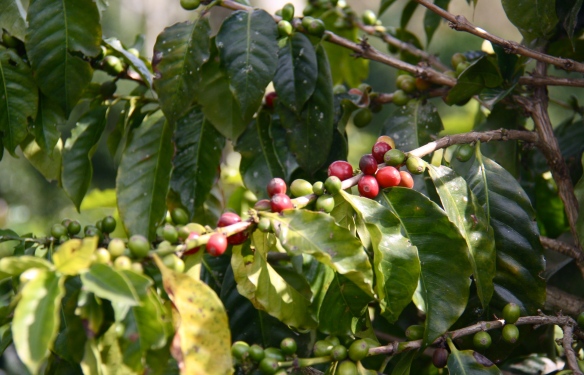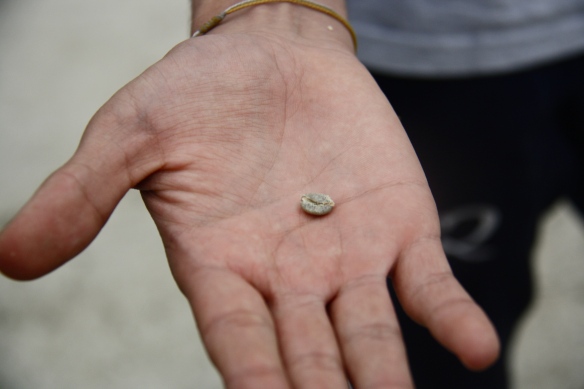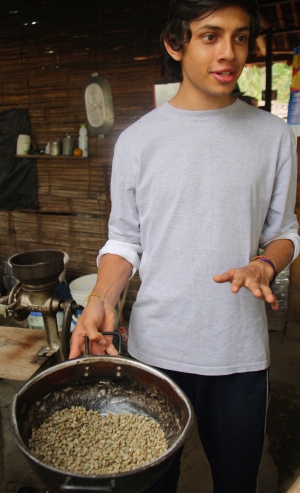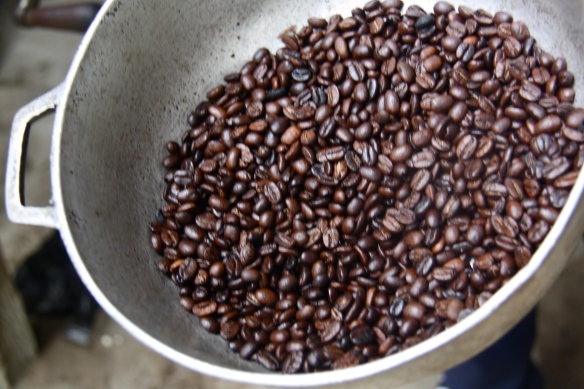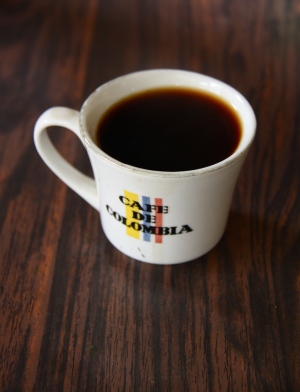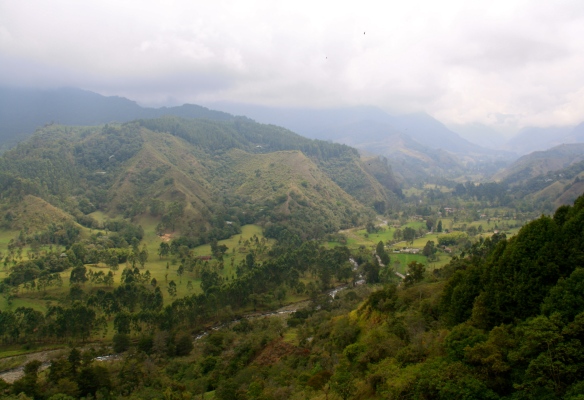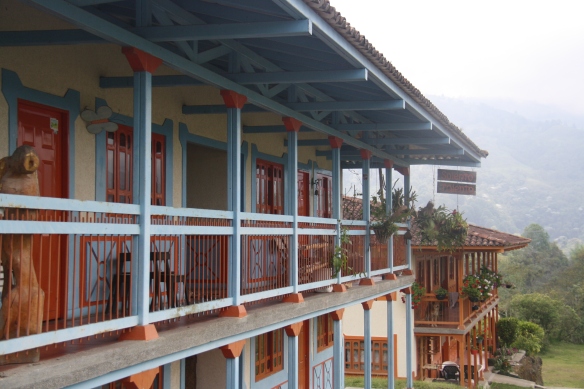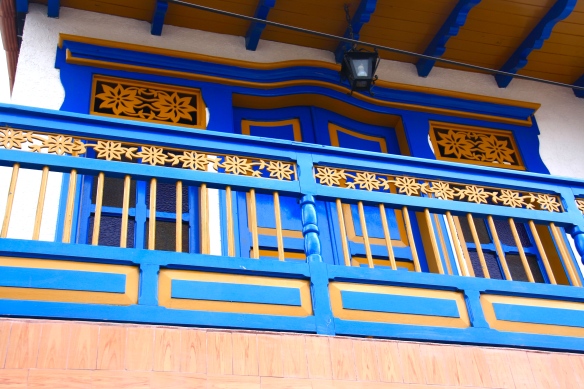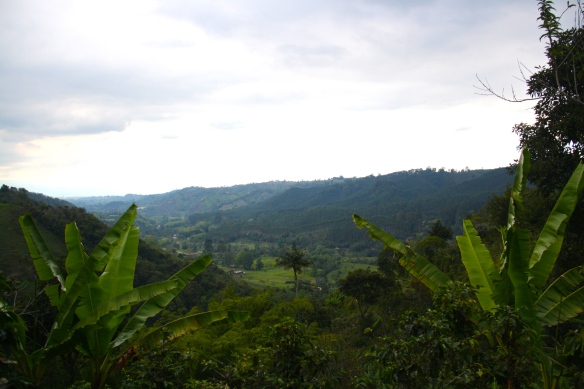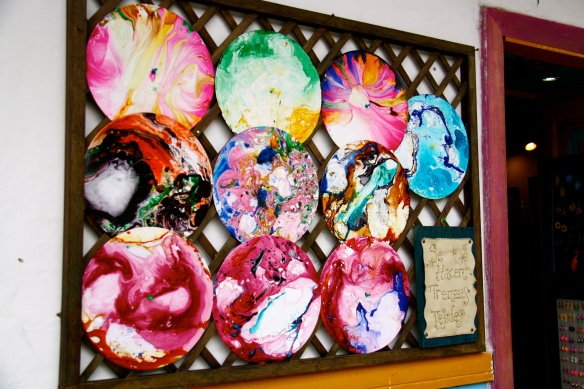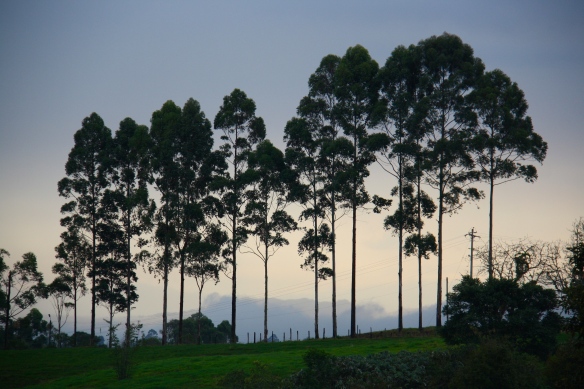Continuing last week’s Salento lovefest, I want to get a little more into the details of what makes this little coffee town such a wonderful place (if all the talk of colorful houses, snuggly scarves, nine billion different shades of green and fresh-brewed tinto weren’t already convincing enough). It’s a cliche at this point to say that the main asset of Colombia is its people, but it’s a basic fact, and nowhere have I found this to be more true than in the coffee region, especially in smaller towns like this one. People go out of their way to do favors just because. You never feel like a jerk if you ask for extra sugar, and inquiring when the next round of transportation leaves will, just as often as not, lead to an offer to just take you now, if you don’t mind paying a couple pesos more, of course.
In many places, it would be considered rude (or worse) to go stomping into someone’s house and demand that they show you around, yet here it’s essentially the norm, especially if you want to go on a tour of one of the local coffee farms (fincas). I had managed to visit twice before ever actually making it to one of these fincas — the first time around because of lack of time, and the second because my friends and I didn’t bother looking up what time the place actually ran tours before heading out there (in typical Colombian fashion, we figured the tour would start whenever people showed up. For once, this was not accurate). This led to a fairly entertaining “self-guided” tour in which we explored the processing center and tried to figure out what all the different tools were for, but it was not ultimately very enlightening. So on my third visit, I vowed that this would be the time I finally found out how the sausage coffee gets made.
There are quite a few local fincas that offer tours (in both English and Spanish), but our hostel and some of the other folks in town recommended the small, family-owned Don Elias, so that was where we leaded. Located about a 45-minute all-downhill walk from town (depending on your walking speed and how often you stop to take photos of the stumble-inducing scenery), this little independent finca is the definition of classic Colombia coffee country. Visitors enter along a path lined with banana and plátano trees, then suddenly emerge into basically the front yard of the family’s house. When we were there, the porch was occupied by a few small children playing, a smaller dog and an unidentified man washing his car right in the middle of the space. Starbucks it ain’t, but that wasn’t what we came for.
Unfortunately, we didn’t have the opportunity to meet Don Elias himself (although a friend took a tour with him, so we know he really exists), and took the tour instead with his grandson, a charming kid in his late teens who had a lot more patience for visitors asking dumb questions than most other kids his age would. Our tour led through the coffee plants, which ripple down the terraced planting section toward the river below. The plants have a maximum productive lifespan of a bit more than 25 years, our guide explained, after which point they become essentially useless. At this point, he made a joke here about things being more or less expired after 25 years, which allowed us to see some pretty serious blushing when we told him how old we were. Definitely worth it. Aging jokes aside, we learned that this particular finca replaces the plants after 17 years, clearing the way for younger plants with a higher yield, and they rotate the planting so they always have a few different age tiers of plants.
This coffee grows best in shade, so the plants are alternated among banana, plantain, avocado and pineapple trees, which also provide important nutrients that help balance the soil and produce better coffee. Because the farm is strictly organic, they use natural tactics to deter insects and other pests. This is the main reason for planting pineapples, our guide told us, because the sweet taste attracts the insects and draws them away from the coffee plants. Who needs pesticides when you have pineapples?
All this talk of snacking was starting to make me hungry, but there was still more to see. After the twice-yearly harvest (done all by hand, by about eight workers over the course of a few weeks), the beans are brought up to the processing plant — an open side of the family house with a few basic tools. The coffee beans are all run through a hand-powered machine, which cracks the outer shell, then fall into a tub where they soak for a full 24 hours. The tub only holds about a kilo of coffee, so the entire process of opening and soaking all of the beans from the harvest takes quite a while. After soaking, the beans are relocated to a makeshift drying house, constructed out of local bamboo-like plants and a clear tarp over the top. They sit here until completely dry, which can take anywhere from a few days to more than a week, depending on how sunny it is during that time.
Once the beans are fully dried, it’s time to divide them up. At this point, the beans that are designated for sale (about half the harvest) are sent off to local and international organic and fair trade buyers, which are then responsible for roasting and selling them to their own markets. The family keeps the other half of the beans for personal use and sale at the farm and at a few choice spots in town. Despite all the fancy talk we hear about roasting techniques, the strategy here is as traditional as it gets — the dry beans are placed in a banged-up metal pot, then roast over the fire for about an hour until they get that beautiful deep-brown color we expect from coffee. Then, to the grinder they go! Like every other part of the process at this farm, there’s no machine involved — if you want coffee, you have to grind it by hand. We all tried it, and I can only imagine that a few weeks of running that machine would leave me with better arm muscles than any class at a fancy gym.
Of course, a visit to a family home in Colombian coffee country wouldn’t be complete without a cup of coffee, so the tour finishes with a fresh-brewed cup of Don Elias’ finest. This is obviously a genius marketing strategy, because it’s nearly impossible to taste this coffee without immediately succumbing to the urge to buy some, especially after hearing all about the lengthy, all-manual process that goes into creating it and getting it into that cup. Plus, as far as I’m concerned, it doesn’t get better than buying coffee straight from the source, especially when that source is a family of coffee farmers, devoted to maintaining the organic, traditional practices that have sustained them for generations.
Oh, and did I mention that the coffee is delicious, too?

